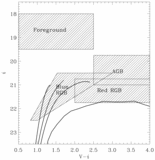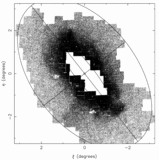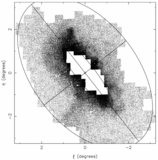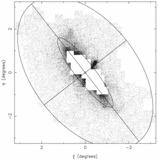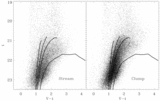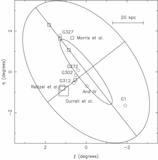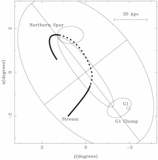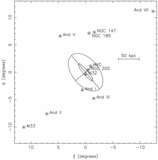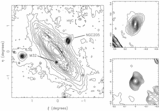Image Details
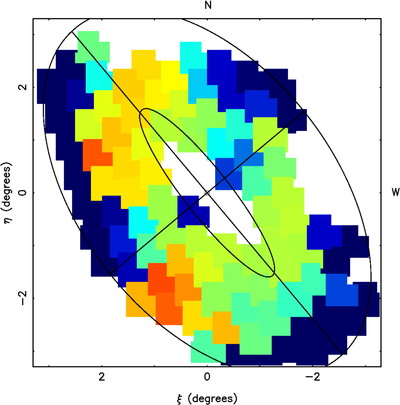
Caption: Fig. 5.
Map of the variation in mean RGB color across M31 (see text for details). Each WFC pointing is represented as a color‐coded polygon. The full metallicity range spanned by the plot is ≈0.75 dex. Lighter gray shades represent regions with progressively bluer mean RGB colors, hence lower metallicities. Darker gray shades represent regions with redder mean RGB colors, hence higher metallicities. The lightest gray polygons seen mostly around the edges of the survey are pointings where the stellar density was too low to make a definitive measurement of the mean stellar color. The "average" halo RGB color is denoted as green; assuming an old stellar population, this corresponds to a metallicity of [Fe/H] ~ −0.7, i.e., similar to 47 Tuc. Yellow, orange and red regions indicate progressively redder mean colors, and hence higher metallicities. Turquoise and light blue regions indicate progressively bluer mean colors, and hence lower metallicities. The full metallicity range spanned by the plot (red through light blue) is ≈0.5 dex. Dark blue regions represent pointings for which the mean stellar density was too low to make a definitive measurement of stellar color.
Copyright and Terms & Conditions
© 2002. The American Astronomical Society. All rights reserved. Printed in U.S.A.


